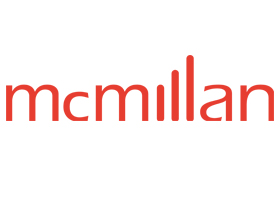


Reduction of Input Tax Credit (“ITC”) Recapture Rate for Ontario Portion of HST (“OHST”) starting July 1, 2015
Reduction of Input Tax Credit (“ITC”) Recapture Rate for Ontario Portion of HST (“OHST”) starting July 1, 2015
Generally, “large businesses”[1] are subject to the ITC recapture of the OHST portion paid on expenses relating to the acquisition of (i) motor vehicles for use on public roads (excluding for re-sale or lease), (ii) motor fuel for such vehicles, (ii) certain energy products, (iii) certain telecommunication services, and (v) food, beverages and entertainment that are restricted by 50% income tax deductibility and ITC availability. While the recapture of ITCs is contrary to the scheme of a value-added tax, by which businesses that engage in taxable activities can generally claim ITCs to recover the taxes paid on business inputs, it was intended as a temporary measure to help the Ontario Government eliminate its deficit.
Reduction in OHST ITC Recapture Rate
Starting on July 1, 2015 (last week), the OHST ITC recapture rate was reduced from 100% to 75%, as part of an incremental, 3-year phase out of this temporary recapture regime. The recapture rate will be further reduced from 75% to 50% on July 1, 2016, from 50% to 25% on July 1, 2017, and will be eliminated entirely on July 1, 2018. To ensure appropriate net recovery of OHST, large businesses will need to monitor these changes to the ITC recapture rules and adjust their GST/HST accounting and reporting accordingly. In certain circumstances, a large business may be required to report OHST ITC recapture on a GST/HST return at multiple or different recapture rates.
Correcting OHST ITC Recapture Errors
If after the 25% reduction in the recapture rate on July 1, 2015, a large business continues to use the old 100% recapture rate where not applicable, then, to recover the excess net tax (ITC recapture) remitted in error (the “Excess Amount“) for a particular reporting period, the business should claim a rebate from Canada Revenue Agency (“CRA“) to recover the Excess Amount within two years of remittance, unless CRA has already assessed the reporting period. In that case, a Notice of Objection should be filed within 90 days of the assessment to seek reversal of the Excess Amount assessed.
Missing the two-year claim period, or as applicable, the 90-day period within which to object, could result in the business being unable to recover the Excess Tax remitted. Although the business could request that CRA (re-) assess the applicable reporting period(s) within the normal four-year assessment period to recoup the Excess Tax, CRA would be under no obligation to adhere to the request to audit and process the request.
by Jamie Wilks and Carl Irvine
1 Generally, a person, whose annual taxable supplies made in Canada (or made outside Canada through a permanent establishment in Canada) exceed $10 million, is a “large business”. This threshold is calculated with reference to taxable supplies made by any associated persons. Irrespective of whether this $10 million threshold is exceeded, certain financial institutions are large businesses, if they are registrants for GST/HST purposes. Public service bodies, as defined, and certain government entities are not considered large businesses.
A Cautionary Note
The foregoing provides only an overview and does not constitute legal advice. Readers are cautioned against making any decisions based on this material alone. Rather, specific legal advice should be obtained.
© McMillan LLP 2015
Insights (5 Posts)View More
Ontario (Might get the) Right to Repair – An overview of Bill 187 the Right to Repair Consumer Electronic Products, Household Appliances, Wheelchairs, Motor Vehicles and Farming Heavy Equipment Act, 2024
Ontario considers new right to repair legislation for consumer products and motor vehicles.
More Than Meets the Eye: The Legal Implications of British Columbia’s Agreement to Recognize Aboriginal Title Over Haida Gwaii
An analysis of legal implications related to the BC Government's agreement with the Haida Nation to recognize Aboriginal title over Haida Gwaii.
Lessons Learned from the TTC’s Ransomware Attack
Lessons learned from the recent investigation by the Ontario IPC into the effectiveness of the TTC's cybersecurity measures and ransomware attack response
Don’t Get Caught by Canada’s Patent Novelty Grace-Period
The key difference between Canada and other jurisdictions like the United States when relying on the grace-period for inventor disclosures.
Shifting Gears – Canada to Consider New Motor Vehicle Equipment Regulations to Help Prevent Auto Theft
Transport Canada announces plan to update safety standards to combat auto theft.
Get updates delivered right to your inbox. You can unsubscribe at any time.






